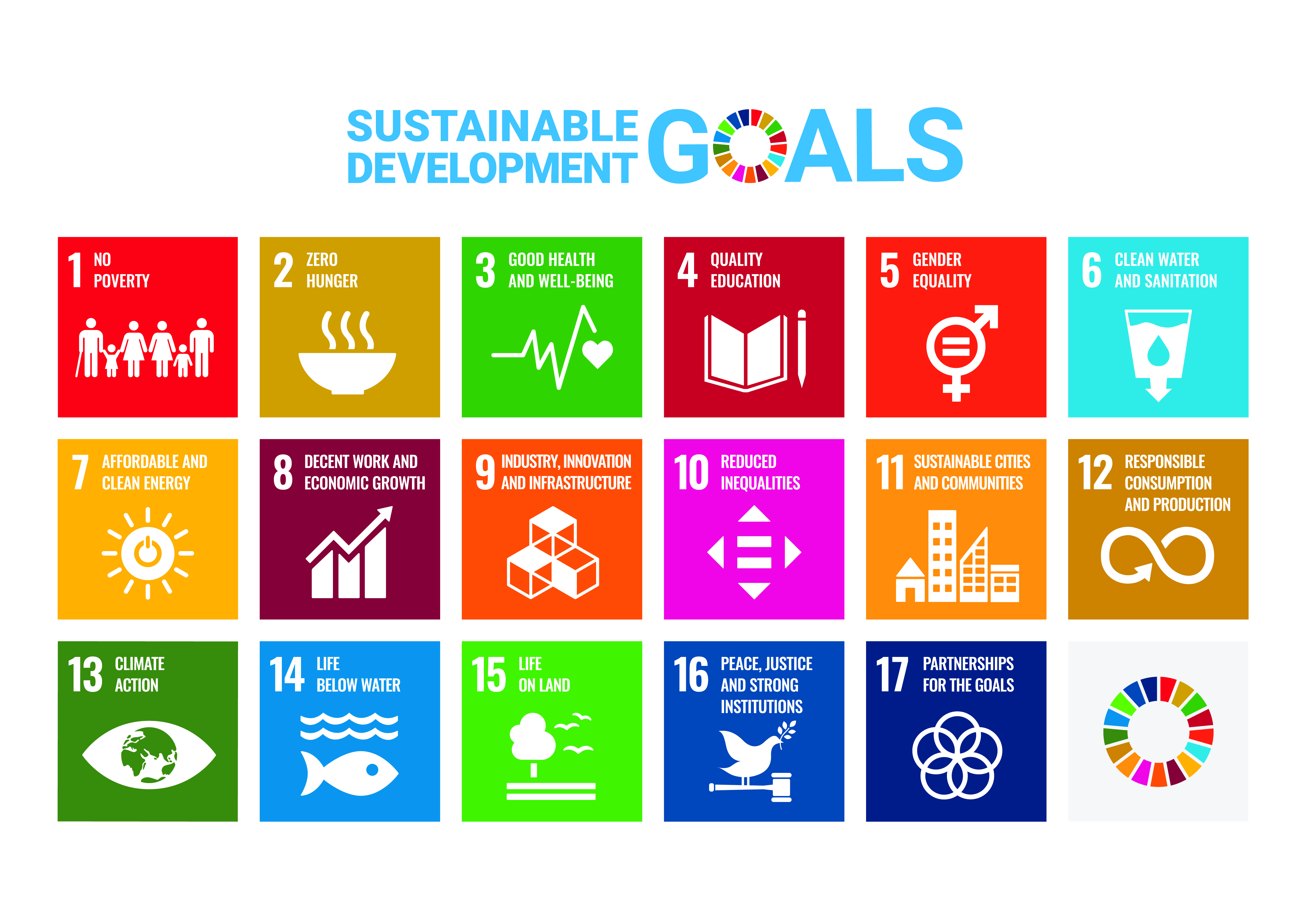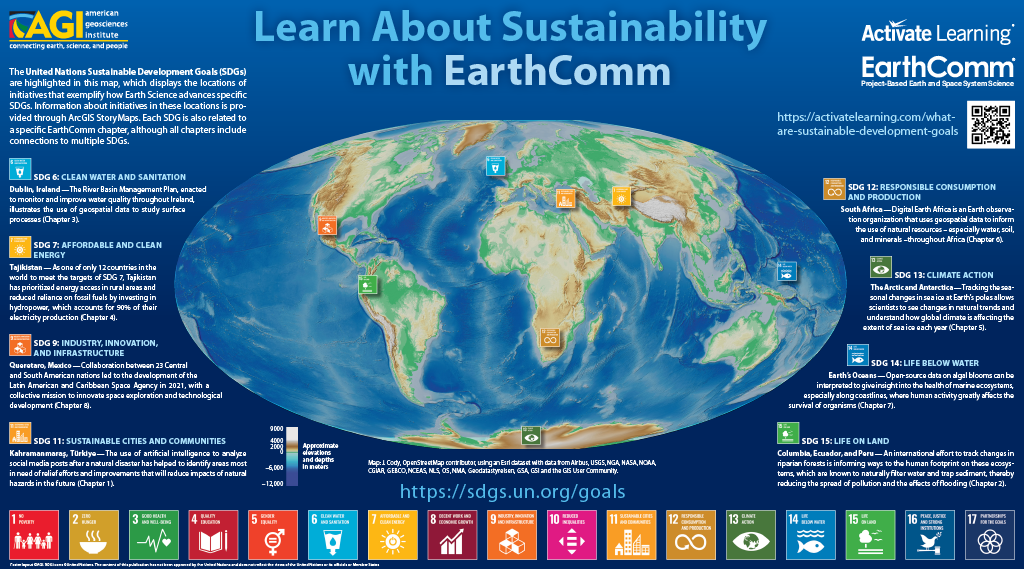Introduction to the United Nations Sustainable Development Goals

The UN Sustainable Development Goals (SDGs) were published in 2015 to establish targets to improve conditions for people and environments worldwide. Read about how the study of Earth science relates to the SDGs, explore examples of work being done around the world to achieve the SDGs, and access additional resources to learn more about each SDG.
Earth Science and the SDGs
The UN’s Sustainable Development Goals (SDGs) are a global plan for a better future. The SDGs are 17 goals, each tackling a major world challenge related to environmental health and living conditions for populations around the world. Each goal is broken down into Targets and Indicators that identify specific problems that must be addressed to foster sustainable development.
Look at the 17 SDG tiles in the figure above. Think about how knowledge of Earth science could help meet these goals.
Sustainability requires that we know how our Earth works. Earth scientists, also called geoscientists, study a specific aspect of Earth’s systems and can contribute to work being done to achieve many of the SDGs. For instance, ensuring access to clean water (SDG 6) involves hydrologists understanding the water cycle and water quality. Addressing climate change (SDG 13) requires studying Earth’s climate systems and the impacts of human activity by climatologists. Maybe not as evident would be soil scientists’ understanding of how soil geochemistry can impact crop growth rates to ensure an adequate food supply (SDG 2). Engineers can also study the effect of soil erosion on the development of infrastructure (SDG 9).
While reading the EarthComm textbook, consider how knowledge of Earth’s processes, materials, and systems can inform sustainable practices and help to meet the SDGs. The contributions of Earth science towards the SDGs are not only about addressing current challenges. Working towards the SDGs is also about building a foundation for a sustainable future. Geoscientists give insights into the responsible management of natural resources and sustainable development planning. Leaders are integrating geoscientific knowledge into policy, decision-making, and community engagement, displaying the importance of Earth science in achieving global sustainability objectives.
Learn About Sustainability with EarthComm
The following poster was developed as a resource to help introduce students to the SDGs, the work of geoscientists and geoscience organizations helping to achieve the SDGs, and concepts in the EarthComm textbook. Click on the image of the poster to access the interactive version that links to the website for each SDG and StoryMaps that summarize work related to each highlighted SDGs.
Explore the SDGs
-
To learn more about each SDG and their Targets and Indicators, visit the UN Department of Economic and Social Affairs website.
-
For more information on how each SDG relates to knowledge of Earth Science, visit AGI’s Career Explorer.
-
To read about how geoscience careers help to achieve specific SDGs, visit Sustainable Development Goals and the Geosciences: A Review.
-
To use an interactive map to explore each nation’s progress toward each SDG, visit the Sustainable Development Report.
-
For lessons that integrate the SDGs and the work of geoscientists, visit AGI’s Geoscience for Sustainability page.

